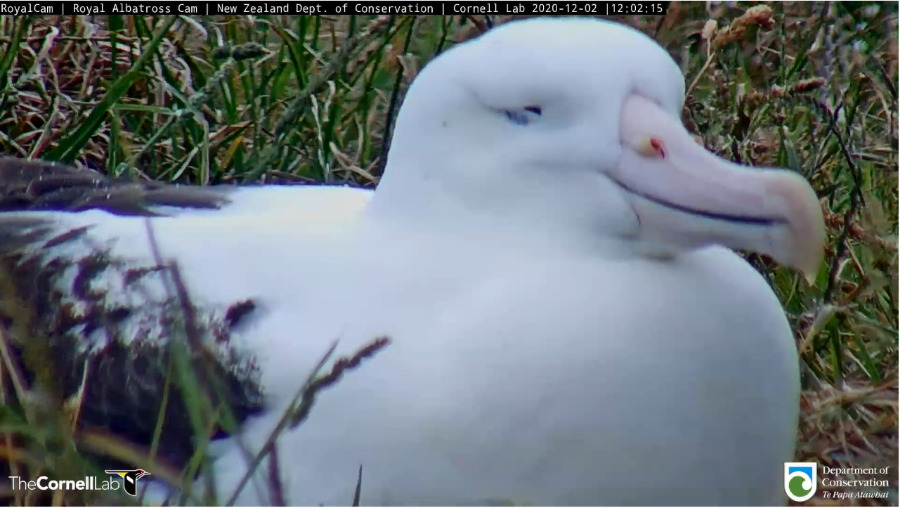Vakardien publicētais paziņojums par tiešraides kamerai izvēlēto ligzdu un pāri LGL/LGK.
Sharyn Broni (Ranger, DOC)
The cam has moved 4m north to get an optimal view of LGK and LGL's nest. We will not be featuring the nest to the right which is RLK and GLG although we will see them around as they are within view of the cam when zoomed out or panning.
It looks like the final egg laid count will be 41, second highest ever and does not include any female/female pairs, which in the past have boosted the egg count as they lay and egg each.
This post has been delayed by the arrival of LGL at the nest, lots of allo-preening, but LGK is in no hurry to hop of the nest, despite having been on incubation duty for 13 days. It shows how robust the albatross are that they can last for this long without food. They are in good condition at this stage having built up fat stores over the last year following the fledging of their first chick, Karere.
The egg will remain at the nest now that LGL is in.
Sharyn Broni (Ranger, DOC)
Kamera ir pārvietojusies par 4 m uz ziemeļiem, lai iegūtu optimālu skatu uz LGK un LGL ligzdu. Mēs nerādīsim ligzdu pa labi, kur ir RLK un GLG, lai gan mēs tos redzēsim , jo tie ir redzami kameras skatienam, kad tie tiek tuvināti vai panoramēti.
Izskatās, ka pēdējais dēto olu skaits būs 41, otrais augstākais jebkad, un tajā nav iekļauti sieviešu / sieviešu pāri, kas agrāk ir palielinājuši olu skaitu, kamēr viņi dēj, un olšūnas katra.
Šo ierakstu ir aizkavējusi LGL ierašanās ligzdā, daudz all-preening, bet LGK nesteidzas pamest ligzdu, neskatoties uz to, ka viņš ir bijis inkubācijā 13 dienas. Tas parāda, cik spēcīgs ir albatross, ka viņi var ilgi uzturēties bez ēdiena. Šajā posmā viņi ir labā stāvoklī, jo pēdējā gada laikā pēc pirmā cāļa Karere ir izveidojuši tauku krājumus.
Ola paliks ligzdā tagad, kad atrodas LGL.
(GT)











 Juvenile Albatross Mix & Mingle!
Juvenile Albatross Mix & Mingle!  11.27.20
11.27.20




 11.29.20
11.29.20















